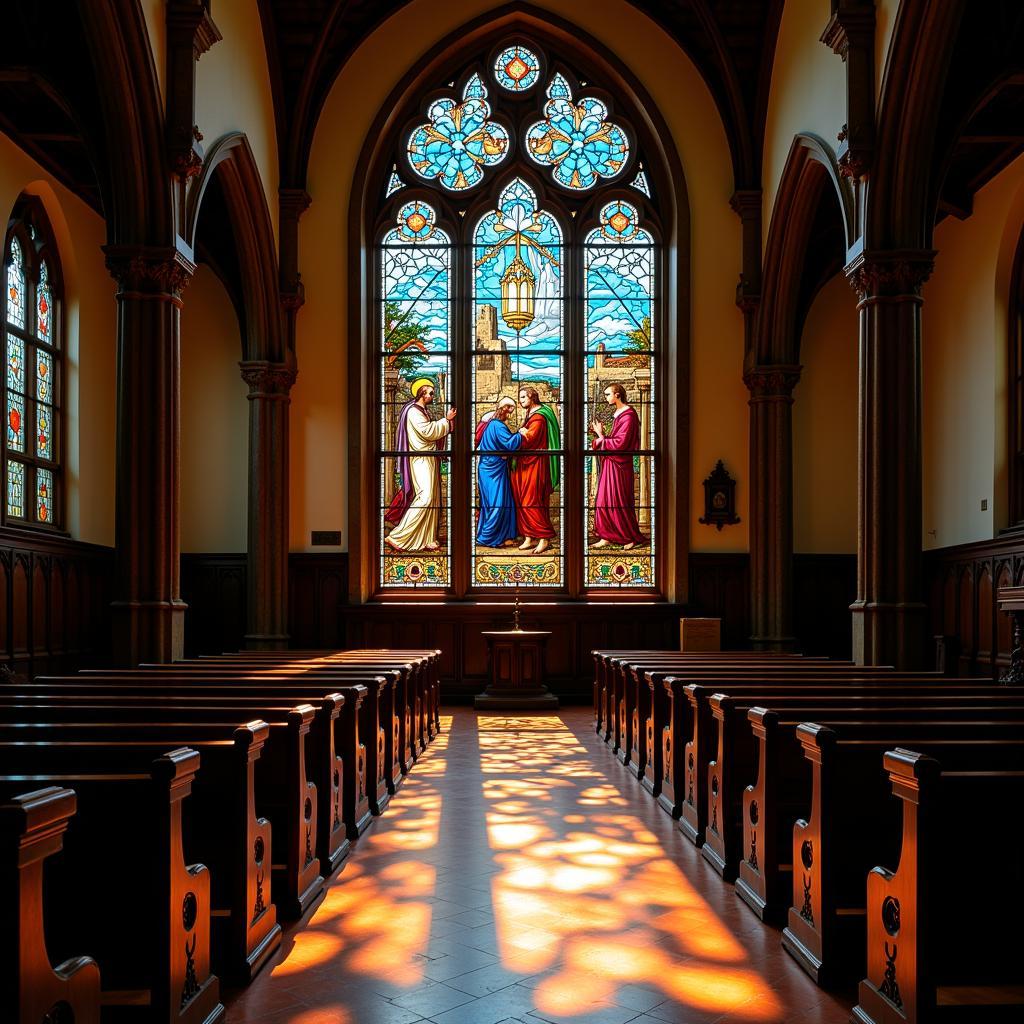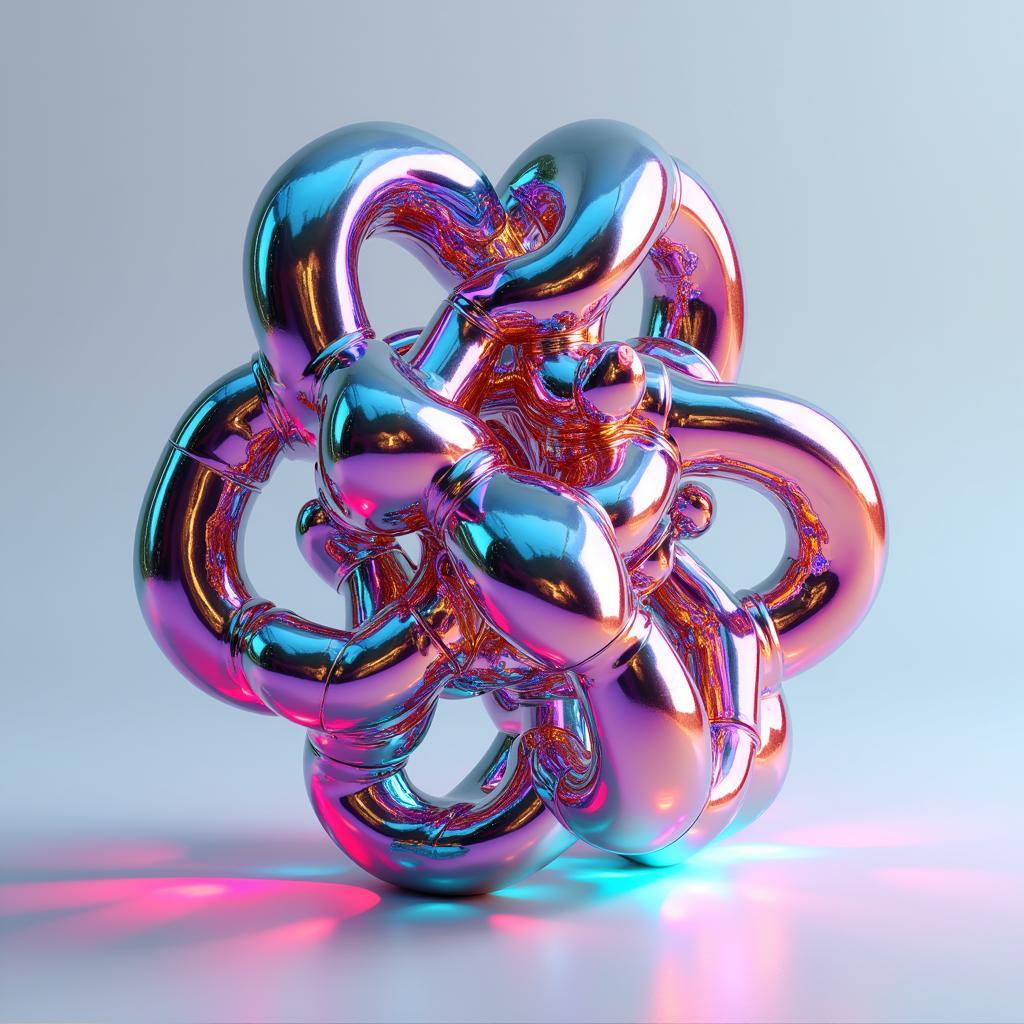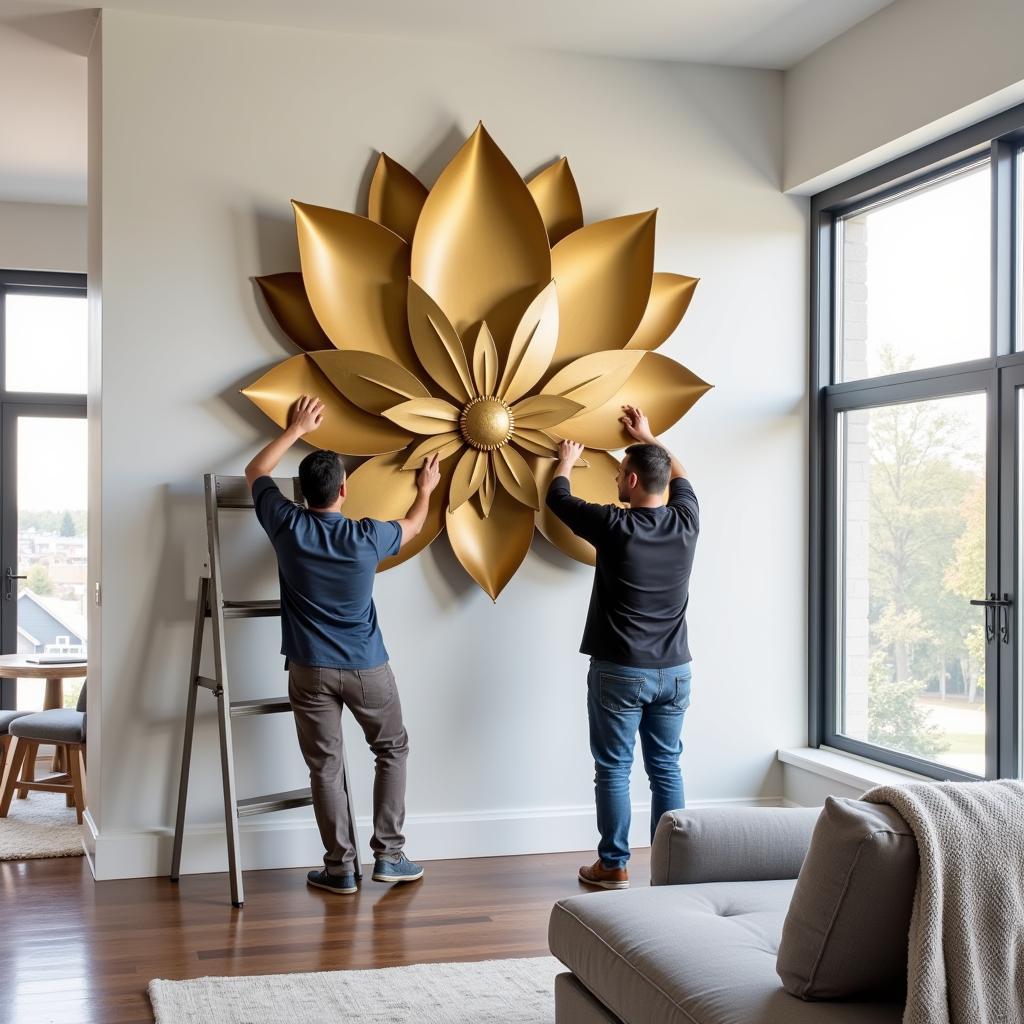Exploring the World of Pitchwai Art
Pitchwai Art, a captivating blend of Indian narrative painting and Chinese influences, offers a unique visual feast. This centuries-old art form tells stories, often depicting scenes from Hindu epics and local legends. Its vibrant colors, intricate details, and dynamic compositions make it a truly remarkable form of artistic expression.
Unraveling the History of Pitchwai Art
Pitchwai paintings traditionally adorn the walls of temples dedicated to Shrinathji, a form of Krishna. Originating in Nathdwara, Rajasthan, India, in the 17th century, these devotional artworks served as backdrops for storytelling and religious rituals. The name “Pitchwai” itself derives from “pich” (back) and “wai” (hanging), reflecting their original purpose as temple hangings. Over time, Pitchwai evolved beyond religious contexts, finding its way into homes and art collections worldwide. The art form continues to evolve, with contemporary artists exploring new themes and techniques while preserving its rich heritage.
The Distinctive Characteristics of Pitchwai
What sets Pitchwai apart from other Indian painting styles? It’s the unique fusion of indigenous Indian traditions with influences from Chinese art, noticeable in the delicate brushwork and vibrant color palettes. Pitchwai artists employ natural dyes derived from plants, minerals, and even insects, resulting in colors that retain their luminosity for generations. The meticulous detailing, often requiring months of painstaking work, brings each scene to life, capturing the essence of the narrative. Another defining characteristic is the use of “pichwai cloth,” a starched cotton fabric that serves as the canvas for these stunning artworks.
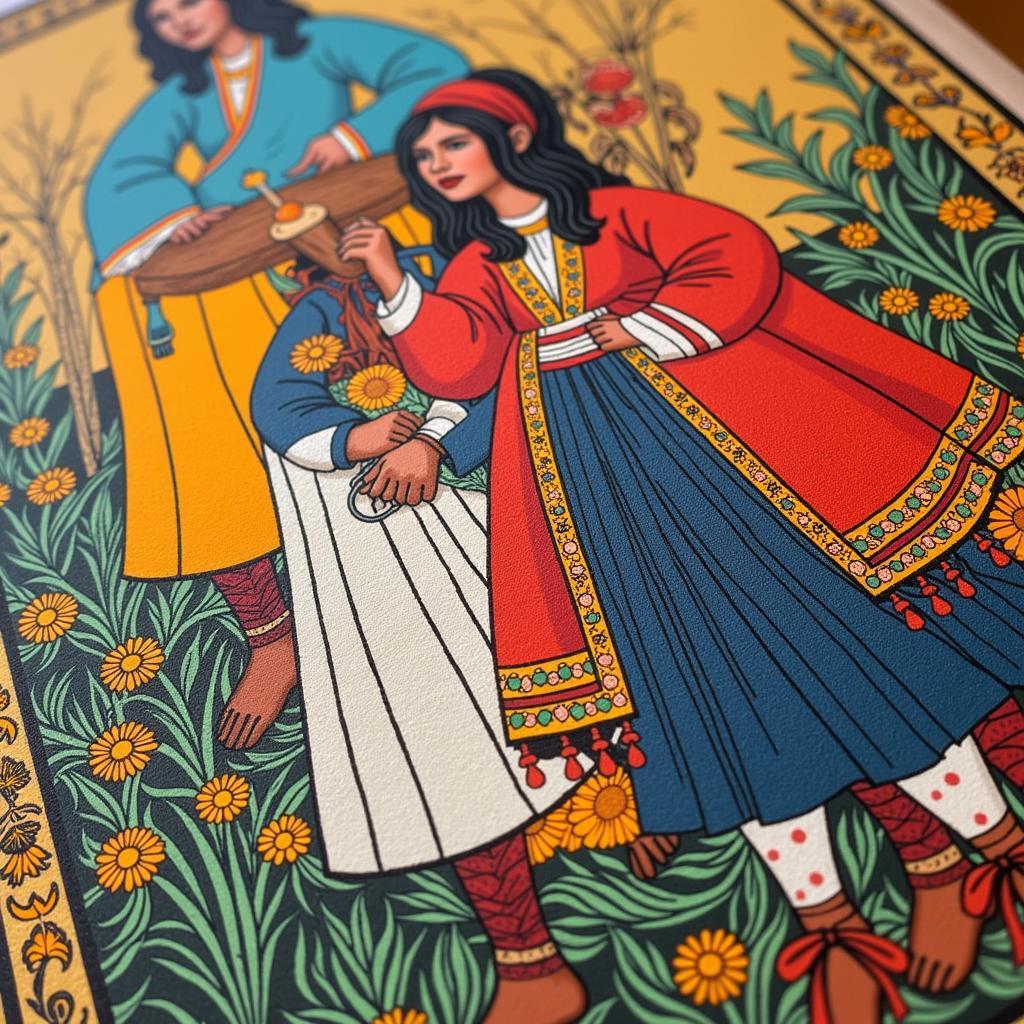 Pitchwai Painting Showcasing Natural Dyes and Intricate Details
Pitchwai Painting Showcasing Natural Dyes and Intricate Details
Understanding the Themes and Symbolism in Pitchwai
Pitchwai paintings are rich in symbolism, often depicting scenes from the life of Shrinathji, including festivals, rituals, and episodes from the Bhagavata Purana. The recurring motifs of cows, lotuses, and peacocks carry symbolic meaning, representing Krishna’s divine associations. The use of specific colors also holds significance, with each hue conveying a particular emotion or attribute. By understanding these symbolic elements, viewers can delve deeper into the rich narrative layers embedded within each artwork. For instance, the depiction of Shrinathji holding up Mount Govardhan symbolizes his divine power and protection.
Pitchwai Art in the Modern Era: Preserving Tradition, Embracing Innovation
How is Pitchwai art adapting to the 21st century? While traditional themes and techniques are still revered, contemporary artists are exploring new avenues of expression. They are incorporating modern sensibilities, experimenting with different mediums, and addressing contemporary issues through their work. This evolution ensures that Pitchwai art remains relevant and continues to captivate audiences worldwide. Workshops and online resources are also playing a crucial role in preserving this ancient art form and making it accessible to a wider audience.
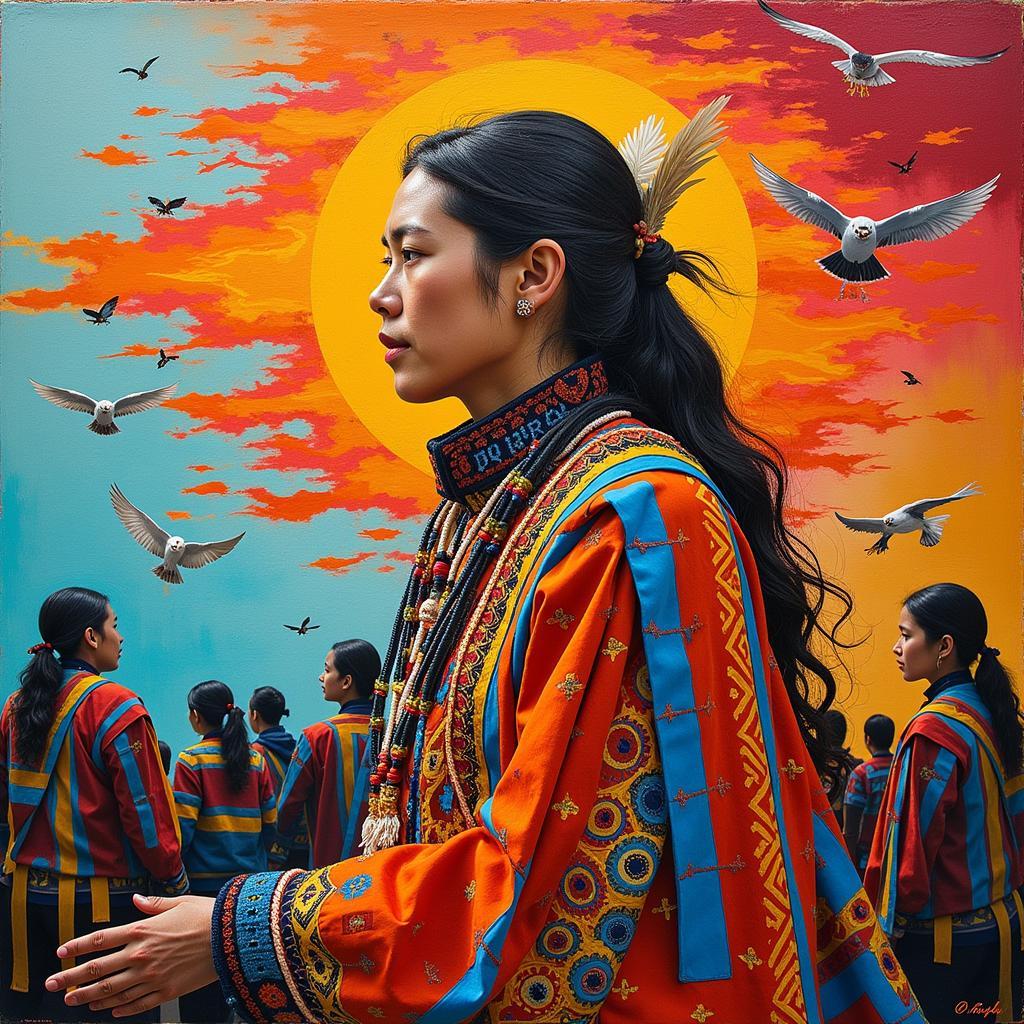 Modern Pitchwai Art: Innovative Interpretation of Traditional Themes
Modern Pitchwai Art: Innovative Interpretation of Traditional Themes
Conclusion: A Timeless Art Form for the Modern World
Pitchwai art, with its rich history and vibrant aesthetic, continues to enchant art lovers around the globe. From its traditional roots in temple hangings to its modern interpretations, Pitchwai offers a unique window into Indian culture and spirituality. By understanding its history, techniques, and symbolism, we can truly appreciate the artistry and devotion embedded in each Pitchwai painting. Explore the world of Pitchwai and discover the timeless beauty of this remarkable art form.
FAQ
-
What is Pitchwai art?
Pitchwai is a traditional Indian art form, specifically a style of painting, originating in Nathdwara, Rajasthan. It depicts scenes from the life of Shrinathji, a form of Krishna. -
What makes Pitchwai unique?
Pitchwai is unique for its vibrant colors derived from natural dyes, intricate details, and the use of starched cotton cloth as a canvas. It also blends Indian and Chinese artistic influences. -
What are common themes in Pitchwai paintings?
Common themes include scenes from the life of Shrinathji, such as festivals, rituals, and episodes from the Bhagavata Purana. -
Where can I see Pitchwai art?
You can see Pitchwai art in temples, museums, art galleries, and private collections. You can also find reproductions and contemporary interpretations online. -
How is Pitchwai art being preserved today?
Through workshops, online resources, and the efforts of contemporary artists who are keeping the tradition alive while exploring new creative avenues. -
Are there different styles of Pitchwai?
While the core elements remain consistent, there are variations in style depending on the artist, region, and period. Some styles emphasize intricate detail, while others focus on bold colors and compositions. -
How can I learn more about Pitchwai art?
Online resources, museums, and books specializing in Indian art are excellent places to start. You can also attend workshops and connect with artists practicing this art form.
Common Scenarios and Questions:
Scenario: You are interested in buying a Pitchwai painting.
Question: How can I authenticate a Pitchwai painting and determine its value?
Scenario: You want to learn how to paint in the Pitchwai style.
Question: Are there any online or in-person workshops available to learn Pitchwai painting?
Scenario: You are researching Indian art forms for a project.
Question: What are the key differences between Pitchwai and other Indian painting styles like Madhubani or Phad?
Further Exploration:
Explore other articles on our website related to Indian art, miniature painting, and textile traditions. Learn more about the history of Nathdwara and the worship of Shrinathji. Discover other traditional art forms from Rajasthan and explore the world of natural dyes and pigments.
Need help?
Contact us at Phone Number: 02462573573, Email: [email protected] Or visit us at: Savico Megamall, 7-9 Đ. Nguyễn Văn Linh, Gia Thụy, Long Biên, Hà Nội 10000, Việt Nam. We have a 24/7 customer service team.
